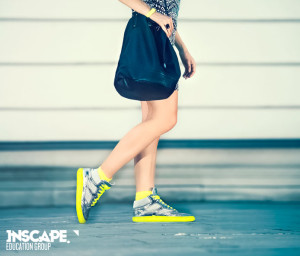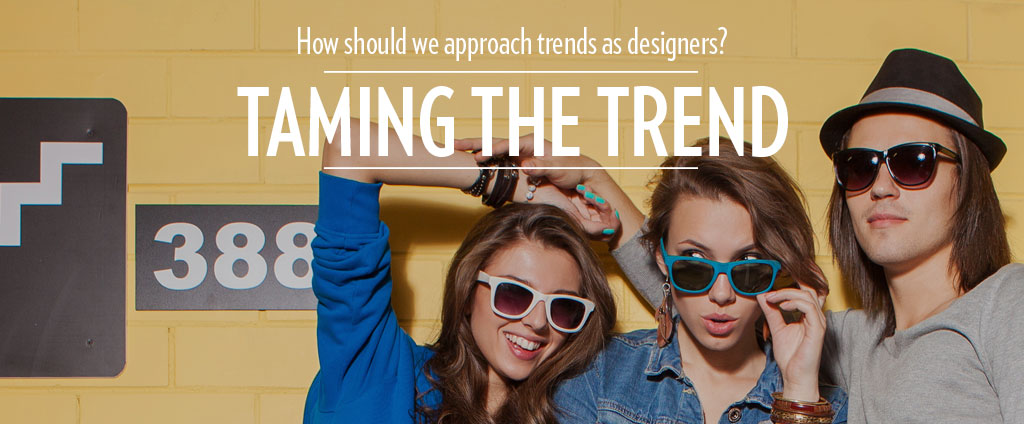By Jeanne Baker-Muller
How should we approach trends as designers? Should we merely just follow them because they are trends and it is our job to know what’s hip and happening, or should we be the ones ‘telling’ trends how to behave?
Following trends can be a very daunting and confusing task. How does one decide which ones to follow, which ones not to follow and when is it time to trade in the old for the new.
As soon as we master a trend a new one emerges, and once again we need to put on our chameleon suites and adapt to a new set of ‘rules’ because apparently we are flexible like that. Let’s face it, we loathe change because it means we need to lock up and abandon our cosy comfort zone caves for the unknown.
NEWS FLASH! You shouldn’t be settling with a trend and become too comfortable with it, it is a resource and not your BFF.

For this reason designers need to set boundaries for how trends affect our decision-making and realise that they merely serve as guidelines and not the rule. We should step up as fierce ringmasters and tame trends to fit our design solutions instead of forcing our solutions to conform to a trend. This will result in designers being more in charge when deciding which trend to follow and when to abandon a trend for something better.
For this to become a reality we should embrace a culture of setting trends. I’m not suggesting that we discard all trends and attempt to ‘reinvent the wheel’. What I’m getting at is that we should be at the forefront of trend evolution instead of following trends blindly like a flock of sheep. Instead of just accepting them for what they are, we should challenge them on every level possible.

As a trendsetter you need more than just an eye for cool things, you need to be a curious individual who study trends diligently to determine the elements and the reasons why a specific trend is so popular, and identify its shortcomings at the same time. A trendsetter worthy of their name can anticipate the direction in which a trend is developing and then make the next move to evolve it into something better and more relevant to a specific design challenge.
We shouldn’t become so fixated on a trend that we miss the bigger picture. We should pursue our calling to be one of a kind, creative creators with unique thoughts, a unique style and a unique approach to solving design challenges.
